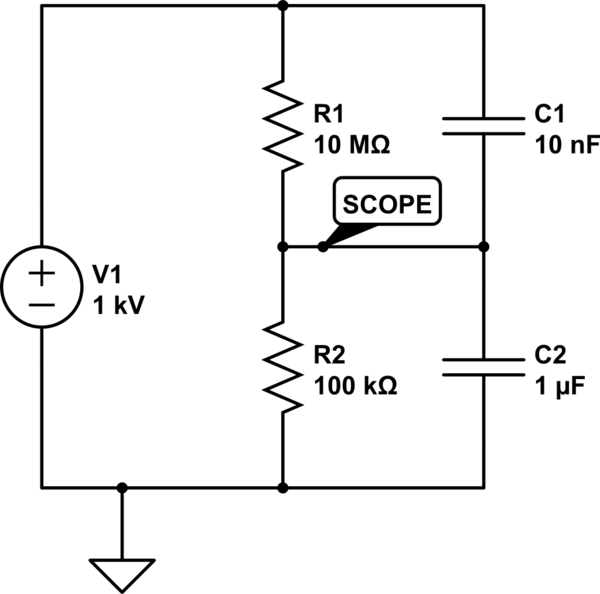I have a ferrite transformer outputting 1.2kV RMS on it's secondary. I have added a diode to do half-wave rectification, and have added a sufficient capacitor (10nF) in parallel to deal with ripple. It's more than enough, according to the formula \$dV = \frac{i}{fC}\$
I'm using 32kHz on the transformer, and I plan to draw at most 500 µA. This should give me a very small ripple.
However, to measure ripple, I tried using a 1000:1 high-voltage probe. It has 1GΩ impedance, and it's rated for 60Hz only. Measuring my rectified / filtered voltage shows a lot of gargabe and a huge ripple, around 800V, but I suspect this is false, given the probe's inability to deal with higher frequencies, probably.
I also tried a voltage divider using 10MΩ and 100kΩ regular 1/8W resistors and a regular scope probe on the 100kΩ resistor, but results are quite similar.
Changing the capacitor or removing it completely changes the ripple just a little, about 10% better or worse.
So, my question: is it normal to get false results with those probes (or voltage dividers) on high-frequency voltages?
Is there a safe and reliable way to measure ripple on this particular scenario?
UPDATE:
Here is the distortion I got on the secondary, after rectification and filtering, to illustrate the question a little better:
After reading the suggestions of everyone, I decided to do a test I didn't do before: I made another transformer, with a secondary of about 170V. That way I could use a regular 10x probe (without any voltage divider), and compare it's performance with the 1/1000 voltage divider, but keeping the 32kHz frequency. 170V is good because it's not too high for a 10x probe, but not too low for a 1000x divider.
Here's the result. First, the secondary after rectification and filtering, measured with the regular 1/10 probe. A very acceptable DC signal:
However, here's the same signal measured with the divider. If we ignore the heavy noise, we can see the same pattern seem on the first picture:
I don't know it this is the only problem with my circuit, but it's clear the measuring method is the biggest one. I will build a 1/1000 probe, using high voltage resistors and compensation capacitors shielded from noise. I can't rely on simple voltage dividers for this thing.




